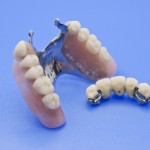
Denture stomatitis (DS) is a common oral mucosal lesion of older people. It is characterised by chronic erythema and oedema of some or all the mucosa under removable dentures.
The aim of this review was to assess the efficacy and effectiveness of interventions (including inactive comparators) to treat or prevent DS in removable denture wearers.
Methods
Searches were conducted in the Cochrane Oral Health Group Trials Register, Cochrane Central Register of Controlled Trials, Medline, and Embase databases with no restriction on language or date of publication. Randomised controlled trials(RCTs) comparing agents prescribed to prevent or treat DS were considered. The main outcomes were clinical signs of DS and the presence of yeast.
Two reviewers selected studies for inclusion with 4 reviewers abstracting data. Risk of bias was assessed using the 7 domains of the Cochrane risk of bias tool. The results for each study were expressed as risk ratios (RRs) with 95% confidence intervals (CIs) and combined using the Mantel-Haenszel method.
Results
- 35 studies involving a total of 1635 patients were included.
- 24 studies contributed to a meta-analysis.
- No studies were considered to be at low risk of bias, 3 were unclear and the remainder at high risk of bias.
- 3 RCTs compared nystatin with placebo demonstrating a signification reduction of clinical signs of stomatitis, RR= 0.51 (95%CI; 0.36–0.72).
- 4 RCTs compared nystatin with placebo and found a significant effect on mycological assessment, RR= 0.61 (95%CI; 0.46-0.80).
- 5 RCTs of disinfectant agents showed a significant effect on clinical assessment compared to an inactive agent, RR= 0.52 (95%CI; = 0.30-0.92).
- No evidence was found of an effect of miconazole, amphotericin, or imidazolic drugs.
- No RCT evaluated the effectiveness of preventive approaches.
Conclusions
The authors concluded: –
current evidence suggests that nystatin and disinfecting agents can reduce the inflammation associated with DS and the presence of Candida better than inactive treatment methods, but there is no evidence that any therapy is better than any other for the treatment of DS. Decisions regarding antifungals or disinfecting methods should be made based on clinical experience and patient-related aspects, such as adherence, possible adverse effects, and preferences.
Comments
The reviewers have searched a number of databases and identified a good number of randomised controlled trials for this question. However, overall the trials are small and they are all of an active agent versus placebo so no directly comparative studies are available. In addition, the quality of the included studies overall is low with 32 out of the 35 being considered to be at high risk of bias. Consequently, the findings should be treated cautiously. An earlier review by Emami et al (Dental Elf – 18th Dec 2013) suggested that disinfection methods could be an alternative or adjunct to antifungals for treatment of denture stomatitis although again the quality of the available studies was low.
Links
Primary paper
Hilgert JB, Giordani JM, de Souza RF, Wendland EM, D’Avila OP, Hugo FN. Interventions for the Management of Denture Stomatitis: A Systematic Review and Meta-Analysis. J Am Geriatr Soc. 2016 Dec;64(12):2539-2545. doi: 10.1111/jgs.14399. Epub 2016 Nov 27. PubMed PMID: 27889906.
Other references
Dental Elf – 18th Dec 2013

[…] Denture stomatitis: some evidence for nystatin and disinfecting agents […]